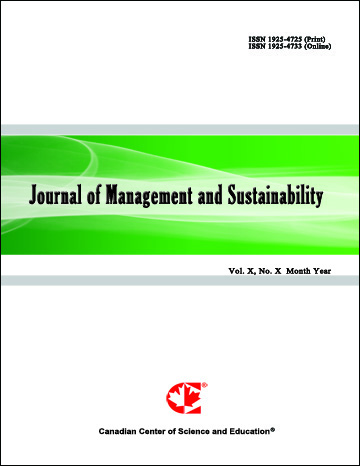Consensus Building: Implications for Labour – Management Relations in Nigeria
- Samuel Mbah
- Iwuji Ifeanyi
Abstract
This paper adopts a qualitative approach to describing the concepts of consensus building in labour and management relations in the industry. Labour management relations in Nigeria are often described as a soar relationship. This is because labour - management views are seen as diametrically opposed to each other. The relevant stakeholders have failed in their responsibility to ensure that industrial peace and harmony reigns. Rather, they prefer conflicts and strikes as the only veritable means to actualize their desired needs. Consequently in this soar relationship, there is disobedience, incessant breakdown of law and order, man – hour – loss, state of job insecurity and so on. So in order to reduce to the barest minimum these occurrences, there is the need for consensus building among relevant stakeholders in industries. This will help ensure long awaited industrial peace and harmony needed for industrial growth and economic development. Authors therefore used the, consensus theory, which is a sociological perspective model, by Thomas Kilmann (1974), a conflict – handling model to explain the tenets and managerial implications of consensus building. The fifteen step decision making process credited to Barbara Gray was recommended for implementation of consensus building. Finally, the paper concludes that in spite of the conflictual nature of people in industry, conflict accommodation, collaboration, problem – solving mode remain best and effective consensus building strategies when fully implemented. The methods of data collection include textbooks, journal articles, newspapers, and internet source.- Full Text:
 PDF
PDF
- DOI:10.5539/jms.v2n1p190
Journal Metrics
Google-based Impact Factor (2021): 1.54
h-index (July 2022): 37
i10-index (July 2022): 147
h5-index (2017-2021): 12
h5-median (2017-2021): 19
Index
- Academic Journals Database
- ANVUR (Italian National Agency for the Evaluation of Universities and Research Institutes)
- CAB Abstracts
- CNKI Scholar
- EconBiz
- Excellence in Research for Australia (ERA)
- GETIT@YALE (Yale University Library)
- Harvard Library
- HeinOnline
- Infotrieve
- JournalTOCs
- LOCKSS
- MIAR
- PKP Open Archives Harvester
- RePEc
- Scilit
- SHERPA/RoMEO
- Stanford Libraries
- UCR Library
Contact
- Evelyn XiaoEditorial Assistant
- jms@ccsenet.org
